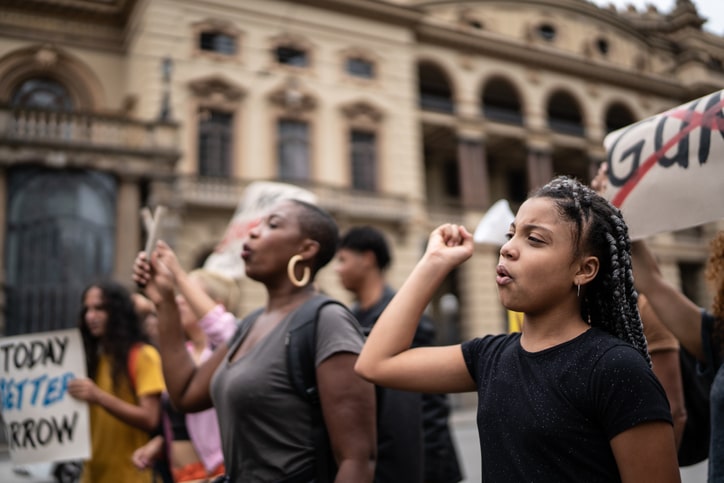Is a girl born in Australia today better off than one born a decade ago?
The answer, even in a wealthy, democratic country with bipartisan support for gender equality, is not a simple ‘yes,’ according to research published on the International Day of the Girl, 11 October.
The analysis by Plan International Australia found that global challenges – like COVID-19, climate crisis, and the rise of far right-wing politics – and intersecting issues like systemic racism, ableism, and transphobia has seen progress on girls’ rights interrupted around the world.
There are over 3.7 million girls and young women in Australia aged 24 and under.
Despite their numbers, humanitarian crises and other shocks rip away gains where they are made, says Susanne Legena, Plan International Australia CEO.
The report’s key findings on equality for girls in Australia included:
- The number of adolescent pregnancies (ages 15-19) has halved in the last decade.
- The number of women in the House of Representatives has increased from 25 per cent in 2012 to 38 per cent in 2022. Based on current progress, it will take another decade for equal representation in the House.
- Rates of sexual assault have increased over the decade by 22 per cent.
- In 2019, the rates of sexual assault for girls and young women aged 15-19 were nine times higher than for males of that age. This is also known to be significantly underreported.
- Adolescent girls and young women have had the highest rates of hospitalisation from intentional self-harm across all age groups since 2012.
- According to the World Economic Forum Global Gender Gap Index, Australia fell from 25th in the world in 2012 to 43rd in 2022. This is compared to New Zealand, that ranked 4th in the world in 2022.
- In 2014–15, 47 per cent of First Nations women aged 15 years and over achieved a certificate, diploma, or degree (almost double the numbers from 2008).
- The rates of gender-based violence are disproportionately higher amongst First Nations girls and young women than the non-Indigenous population. Three in every five First Nations women have experienced physical or sexual violence, according to the 2021 Australian Human Rights Commission Wiya Yani U Thangani (Women’s Voices) framework.
- In July 2022, the NSW Government announced a $30 million investment into ten pilot projects to co-design parts of the city with girls and women and address street harassment.
- The 2018 Australian Trans and Gender Diverse Sexual Health survey found 53 per cent of participants reported experiencing sexual violence or coercion, well above the national average.
- Women with disabilities were 40 per cent more likely to be victims of family violence than women without disabilities and more than 70 per cent of women with disabilities have had violent sexual encounters in their lifetime.
- Period products are now free in all Australian high schools, and after a grassroots campaign in 2018 by young feminist Subeta Vimalarajah, the Australian Government removed GST from pads and tampons.
“The 10-year-old girl is the single most powerful investment we can make, according to the UN. If we can unlock her potential, we can unlock a better world for everyone,” said Ms Legena.
“In the next decade, I want every 10-year-old girl to feel confident that she is equal, she is safe, and she can live up to her full potential and realise all her dreams without any restrictions.”
Get the latest Canberra news, sport, entertainment, lifestyle, competitions and more delivered straight to your inbox with the Canberra Daily Newsletter. Sign up here.



